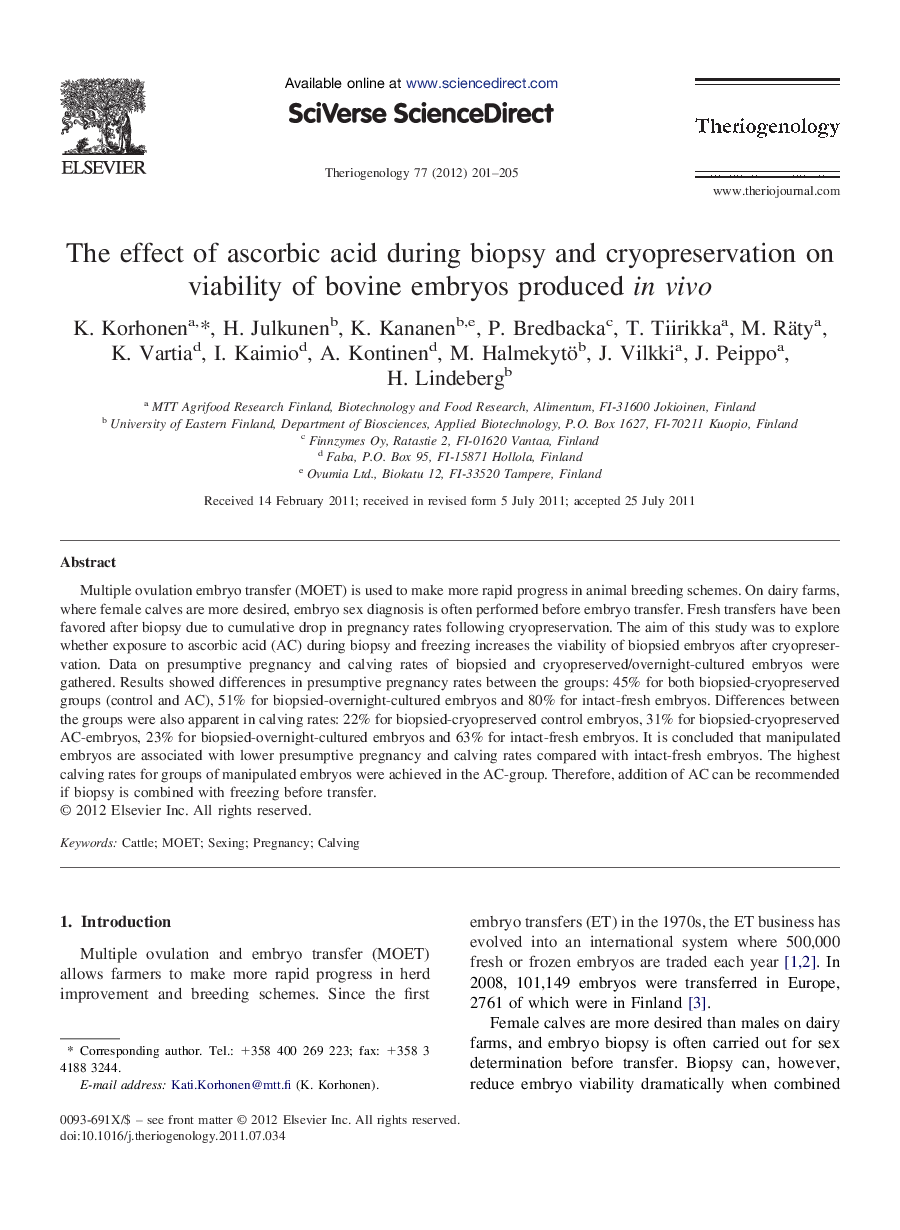| Article ID | Journal | Published Year | Pages | File Type |
|---|---|---|---|---|
| 10892482 | Theriogenology | 2012 | 5 Pages |
Abstract
Multiple ovulation embryo transfer (MOET) is used to make more rapid progress in animal breeding schemes. On dairy farms, where female calves are more desired, embryo sex diagnosis is often performed before embryo transfer. Fresh transfers have been favored after biopsy due to cumulative drop in pregnancy rates following cryopreservation. The aim of this study was to explore whether exposure to ascorbic acid (AC) during biopsy and freezing increases the viability of biopsied embryos after cryopreservation. Data on presumptive pregnancy and calving rates of biopsied and cryopreserved/overnight-cultured embryos were gathered. Results showed differences in presumptive pregnancy rates between the groups: 45% for both biopsied-cryopreserved groups (control and AC), 51% for biopsied-overnight-cultured embryos and 80% for intact-fresh embryos. Differences between the groups were also apparent in calving rates: 22% for biopsied-cryopreserved control embryos, 31% for biopsied-cryopreserved AC-embryos, 23% for biopsied-overnight-cultured embryos and 63% for intact-fresh embryos. It is concluded that manipulated embryos are associated with lower presumptive pregnancy and calving rates compared with intact-fresh embryos. The highest calving rates for groups of manipulated embryos were achieved in the AC-group. Therefore, addition of AC can be recommended if biopsy is combined with freezing before transfer.
Related Topics
Life Sciences
Agricultural and Biological Sciences
Animal Science and Zoology
Authors
K. Korhonen, H. Julkunen, K. Kananen, P. Bredbacka, T. Tiirikka, M. Räty, K. Vartia, I. Kaimio, A. Kontinen, M. Halmekytö, J. Vilkki, J. Peippo, H. Lindeberg,
